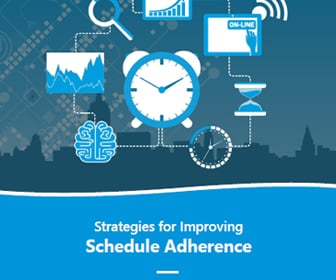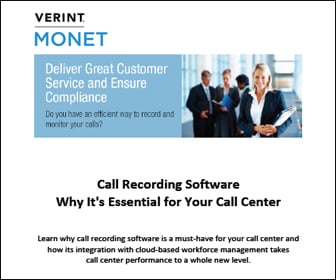Call Center Management Featured Article
Strategies for Driving Effective Call Center Management
In a call center, what happens when even a few agents aren’t available to answer their phones? What if those agents are just a few moments late to work or when returning from a break? For the call center it is crucial to have the right number of agents with the right skills in place and at work at the right time. A recent Monet Software webinar offers several concrete strategies toward achieving that sort of “right” environment. Call center management can benefit from the six strategies provided in this event, using these tools to improve performance of the center as a whole.
1. Quantify the service, occupancy, and cost implications of missing staff.
When there is a lack of adherence to the call center schedule, understaffing results. Understaffing affects the customer, other agents and management. When agents are not where they should be customers must wait longer to have their questions answered, and other agents have less ‘breathing room’ in the call flow because they are needed to pick up extra calls. Because customers are waiting longer in the phone queue, call center management will be faced with increases in telephone costs per hour.
2. Describe options for setting adherence performance goals and selling to the staff.
It is possible to work with the agents to set reasonable occupancy goals and scheduling outlines.
3. Identify the reasons for attendance and adherence problems.
There are three basic reasons for non-performance:
1) Don’t know: the agent may either be unclear about what the expectations are, or they may be unaware of how their behavior is not meeting the expectation. Giving the agent timely feedback either personally or by posting numbers publicly can help resolve the problem.
2) Can’t: the agent may require more training, although adherence problems are rarely lack of training. More likely there could be a barrier that prevents adherence. Discover if there are obstacles to adherence and remove them.
3) Won’t: the agent may lack motivation or may be receiving improper consequences. The most effective consequences are: Positive, Immediate, and Certain.
4. Identify reward and consequence programs that support adherence goals.
Since positive and immediate consequences are most effective, the call center management will want to look for ways to incorporate them into every work week. Budgets for positive consequences may not be large – but even small acknowledgments can go a long way. Verbal affirmations are important, but small tangible affirmations also work well.
5. Communicate the “power of one” to all frontline staff.Emphasize the “power of one” to highlight the importance of every agent’s adherence. Having tables or charts available to make visual those Quantifiable issues (#1) can be helpful. So can activities like Tennis Ball/Water Balloon Toss in which six agents are paired off and given a ball or balloon which they must toss back and forth. Replace one person in the pair and keep the toss moving. Then take one person away without providing a replacement to show how quickly understaffing can create stress and dropped balls – which, of course, represent CALLS.
6. Review how WFM software helps in adherence tracking and reporting capabilities and how to justify them.This is where software such as Monet Workforce Management (WFM) software can streamline the call center and help supervisors achieve the goal of right person in right place at right time. Real-time dashboards, alerts and proactive management reports provide those quantifiables that demonstrate the “power of one”. Software can help properly forecast call center volume, create optimized schedules and even help call center management plan for exceptions, all of which boosts real-time schedule adherence.To gain more insight, access the call center management webinar in full.
Susan J. Campbell is a contributing editor for TMCnet and has also written for eastbiz.com. To read more of Susan’s articles, please visit her columnist page.
Edited by Chris DiMarco






